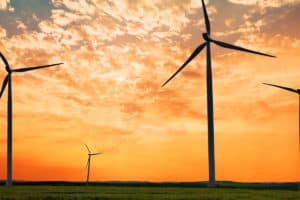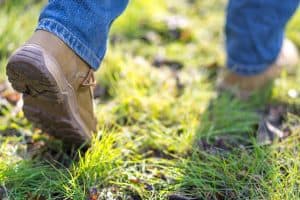The best show this side of the Northern Lights started this week in our back pasture on the north-facing bank of Key Run, a bratty little stream that feeds the Potomac River.
A young sugar maple started turning orange and green-gold. Color shows first on the outer edges of the outer leaves, then the inner part of the outer leaves, then the leaves closest to the trunk.
As the days shorten, these solar-powered sugar factories flame up. Eventually, leaves “fall,” a word that better describes this season than the fancy-pants term, “autumn.”
Higher up on Snowy Mountain, the deciduous trees — the oaks, maples, cherry and ash — still hug their greenery tight as bathrobes. But they, too, will strip for winter, down to their bare bark.
A funny kind of Cinderella ethic is at work out here. The most raggedy, twisted and worthless tree may pretty up better than the best formed, flawless and most valuable. Whose heart is so hard that it does not melt at a fairy godmother working her magic? Not even mine.
When I was a kid, I had the idea that trees turned red and purple because they were holding their breath, which is how my toddler cousin looked when she was told no…and held her breath. I should mention that I had trouble with the analogy section on the SAT.
You get a different sense of fall when you’re inside a turning woods. You’re no longer looking at a picture; you’re now part of it. It dances with you. It whispers in your ear. Close your eyes and you hear leaves falling, then landing. Keeping your eyes shut is cooler than watching leaves gasp for chlorophyll, but it does make you dizzy.
Our fall color splash is considered a free show, though Americans spend about $1 billion riding around and gawking at these plants like a bunch of tourists.
Everyone feels entitled to a good, long look at no charge. I am unaware of anyone selling tickets to passing strangers for taking in the beauty of their property.
However, getting inside wooded land at the top of the fall turn is worth paying for.
Many years ago, our county considered an ordinance that could have, among other things, required a vegetative screen in front of new poultry houses along public roads. I was alone in talking up the importance of protecting our “viewsheds.”
A prominent local farmer replied at one meeting that he knew about a watershed and a pig shed, but a viewshed was a new one on him. Everyone guffawed and slapped a thigh, including me.
He understood protecting the view from his property, but the idea of protecting the view of his property for someone else rubbed his sense of rights the wrong way. He didn’t want to spend his money for that. No one — me, too — likes to be told to pay for something that benefits others.
Since then, many of the fights we’ve had amongst ourselves have been about viewsheds–how a landowner can change the look of his property, and what property rights and public rights others might have in limiting his freedom to look the way he wants. These questions are not easily answered. No one laughs viewsheds out of our conversations anymore. Thigh-slapping is out; head-scratching is in.
For six years, we have argued over a proposal to put a 19-turbine windfarm on the top of a high ridge on our border with West Virginia. Neighbors have opposed the project, because they fear — and I think rightly so — that their property will be devalued by the nearby presence of 400-foot-tall windmills. Some think that tourists will no longer come to see our natural beauty; others think tourists will come to watch the windmills turn. (After all, they come to see the leaves turn, don’t they?)
Arguments were also heard about killing bats and birds, and adding sediment to streams. But I think the fight was mainly over what people, other than the land-owning developer, wanted to see and not see on his land. I could, of course, be wrong, which I often am when it comes to reading between unwritten lines.
In a big-picture sense — a forest-not-the-trees sense — our fight over a handful of wind turbines is about what sustainable development means in our little patch of countryside.
I favored a compromise that would go ahead with the windfarm if the turbines were sited lower on the mountain and scaled down a bit to protect current views. I thought these modifications would make the project more acceptable, but at the cost of some efficiency. Every utility power plant in the country sacrifices efficiency to protect the public’s air, water and land from pollutants. Why should windfarms be different?
Neither side wanted to find middle ground, or consider what sustainable development might mean when push came to shove. A badly conceived project met a badly thought-out opposition. This seems to be one of those unfortunate situations where everyone loses more than anyone gains.
We are now in one season of “Turn! Turn! Turn!” And we anticipate a year-round turning of a different sort.
Ecclesiastes, who was nice enough to write lyrics for Pete Seeger and the Byrds, figured that every zig was followed by a zag, back and forth, a time to do this and then a time to do that, its opposite.
Sustainable development argues that you need to zig and zag at the same time. Ecclesiastes was not down with blending contradictory actions. If you’ve ever tried it, you know it can be tricky.
On the other hand, the luxury of swinging back and forth like a demented pendulum may no longer be ours to enjoy.
And so, maybe all of us can learn something from being in the middle of turnings of both types.
This content may not be used or reproduced in any manner whatsoever, in part or in whole, without written permission of LANDTHINK. Use of this content without permission is a violation of federal copyright law. The articles, posts, comments, opinions and information provided by LANDTHINK are for informational and research purposes only and DOES NOT substitute or coincide with the advice of an attorney, accountant, real estate broker or any other licensed real estate professional. LANDTHINK strongly advises visitors and readers to seek their own professional guidance and advice related to buying, investing in or selling real estate.








Add Comment